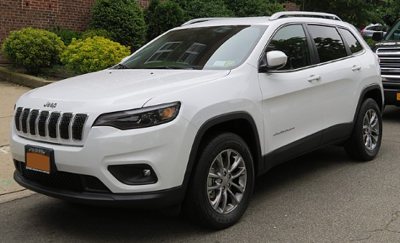The evolution of car sizes from the early days of car manufacturing to today definitely offers a fascinating glimpse into how humans perceive personal vehicles. While the core function of cars remains unchanged (transporting people from one place to another), the factors influencing design, especially size, have indeed evolved to reflect changing needs, technologies, and lifestyles.
 As Long as We Get There - The Early Days of Functional Vehicles
As Long as We Get There - The Early Days of Functional Vehicles
From their introduction up until the post-World War II years, motor vehicles were basically seen as a mode of transportation that could take you from one place to another, regardless of shape and size.
Compact vehicles began to dominate the market in the mid-20th century. The Citroën 2CV was introduced in 1948, and the Mini Cooper was launched in 1959. These cars set the standard for many car owners' preferences because they offered practicality and efficiency. They were also affordable.
Aside from the Mini Cooper and Citroën 2CV, other notable vehicles of this era were the Fiat 500 and Volkswagen Beetle.
 Family Use and the Stylish 70s
Family Use and the Stylish 70s
As more and more individuals and families started dreaming of owning cars, the preference for the type of vehicle also evolved. The concept of a practical or functional vehicle was changing, as it was no longer just about transporting passengers from one place to another; it should do so in comfort and style.
Notably, more and more car owners were buying vehicles that could accommodate their families, not just themselves. The post-war baby boom in the West obviously contributed to the rise of station wagons, as families sought automobiles that could comfortably transport their growing family.
On the other hand, consumers were also focusing on how their vehicles looked - stylish vehicles such as the Lincoln Continental, Cadillac Eldorado, and the Chrysler Imperial LeBaron were some of the big-bodied vehicles that emphasized style and luxury during the '70s. Not only did these cars look good, they also felt good with their sleek design and upgraded interiors.
Enter the 90s: SUVs and Trucks
Vehicle sizes continued to evolve with the rising popularity of SUVs in the late 20th century. Building on the foundation of utility vehicles, models like the Jeep Cherokee became a top choice for prospective car owners starting in the 1980s.
 These vehicles actually captured the appeal of an all-purpose design since they were suitable for both individuals and families.
These vehicles actually captured the appeal of an all-purpose design since they were suitable for both individuals and families.
Compared to station wagons, SUVs offered similar space and storage but came with added advantages in safety, power, and of course versatility. With higher ground clearance and off-road capabilities, SUVs quickly became the preferred option for many drivers all around the world.
Since their emergence in the '80s, SUVs have really grown to dominate the market, becoming one of the most popular vehicle types by the 1990s, especially in regions like USA and Asia.
Trucks also offer strong competition to SUVs in terms of popularity and size, especially in the US. They are often larger, with popular trucks prioritizing bigger towing capacity and passenger capacity. The Ford F-150, now in its 14th generation, is often considered the 'King of Trucks' due to its impressive capacity, space, and power.
Will Size Become a Problem?
According to recent reports, vehicle sizes and dimensions have significantly increased over the past decade, with average vehicles growing 12% in length and 17% in width. Space, comfort, and safety are attributed as the main driving factors behind this increase.
However, the growing size of vehicles also poses a number of challenges, such as reduced gas mileage, parking difficulties, and maneuverability issues. Fortunately, advancements in modern car technologies, including electric vehicles and driver-assistance systems, are helping to address these challenges, making larger vehicles safer and more manageable.
